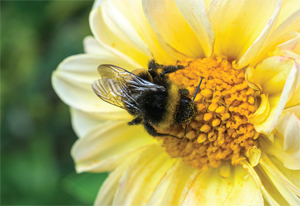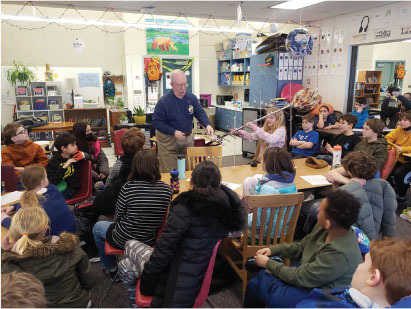September/October 2019
Variables
Can Roadside Attractions Boost Survival Chances?
 As the Minnesota Department of Transportation tries to find solutions to the increasing traffic congestion caused by human population growth in the Twin Cities Metro Area, it’s also trying to find out how it can boost the population growth of a different species: Bombus affinis.
As the Minnesota Department of Transportation tries to find solutions to the increasing traffic congestion caused by human population growth in the Twin Cities Metro Area, it’s also trying to find out how it can boost the population growth of a different species: Bombus affinis.
In 2017, Bombus affinis, the rusty-patched bumble bee, was the first bumble bee named a federally endangered species. Due to the loss of prairies and grasslands and other factors, it is no longer found in more than 95% of its original range. The Twin Cities area, however, is one of the bee’s last refuges, although its population is much reduced. Overall, roughly one in four bumble bee species is in decline.
According to the Fish and Wildlife Service, in the driest of terms, “The economic value of pollination services provided by native insects (mostly bees) is estimated at $3 billion per year in the United States.” Among the bumble bee’s top-rated services: They’re one of the most important pollinators of blueberries, cranberries, and clover, and they’re almost the only insect pollinators of tomatoes.
In response to the bee’s population decline, MnDOT recently worked with the University of Minnesota Department of Entomology to examine miles of metro area roadsides, which make unique bumble bee habitat. Their goal was to characterize the bumble bee community and floral resources within these habitats and learn more about how the habitats can help a struggling population.
Their study covered randomly selected points along major roads and highways for a total study area of approximately 7,700 square kilometers. The area has a population of approximately 3.033 million people.
Researchers found “a species-rich assemblage of bumble bees foraging in roadside areas,” an encouraging sign that these often overlooked areas have potential to support the pollinators.
To make the roadsides more accommodating, control of nonnatives plant species, such as Canada thistle, may be necessary, the researchers say. When roadside managers eliminate flowering plants, bumble bees also appreciate when they are replaced with other plants they can enjoy. If roadside habitats improve, the researchers suggest, the Bombus affinis population may improve too.


 Volunteering at NSPE is a great opportunity to grow your professional network and connect with other leaders in the field.
Volunteering at NSPE is a great opportunity to grow your professional network and connect with other leaders in the field. The National Society of Professional Engineers (NSPE) encourages you to explore the resources to cast your vote on election day:
The National Society of Professional Engineers (NSPE) encourages you to explore the resources to cast your vote on election day:
